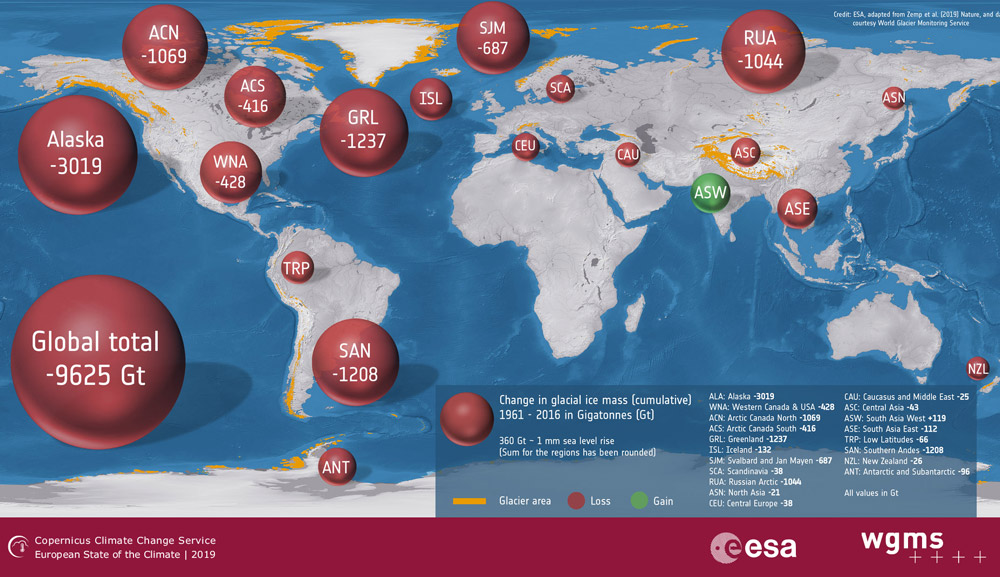WGMS contributing to European State of the Climate 2019
One of the headline climate indicators of the European State of the Climate Report are glaciers and sea level rise. The WGMS is the responsible data and information provider for glacier distribution and changes.
The European State of the Climate (ESOTC) is an annual report compiled by the Copernicus Climate Change Service, Europe's flagship programme to monitor the Earth and its many ecosystems. It delivers freely accessible operational data and information services in six thematic areas: land, marine, atmosphere, climate change, emergency management and security. They are based on the Sentinel satellites and other earth observation data on land, sea and air.
The WGMS and the Department of Geography are the responsible data and information provider for glacier distribution and changes to the Copernicus Climate Change Service, thus contributing to the monitoring of our climate.
Glaciers and sea level rise are headline climate indicators
One of the headline climate indicators are glaciers and sea level rise. The respective part of the report summarises the results published in Nature 2019 by Michael Zemp et al.
ESOTC 2019: Glaciers and sea level rise
Zemp, M., Huss, M., Thibert, E., Eckert, N., McNabb, R., Huber, J., Barandun, M., Machguth, H., Nussbaumer, S.U., Gärtner-Roer, I., Thomson, L., Paul, F., Maussion, F., Kutuzov, S., and Cogley, J.G. (2019): Global glacier mass changes and their contributions to sea-level rise from 1961 to 2016. Nature. 10.1038/s41586-019-1071-0


